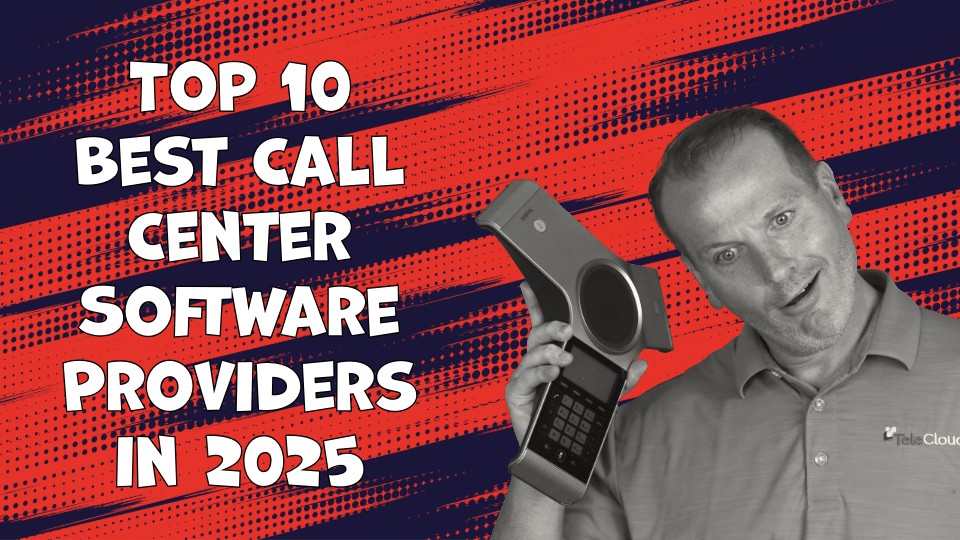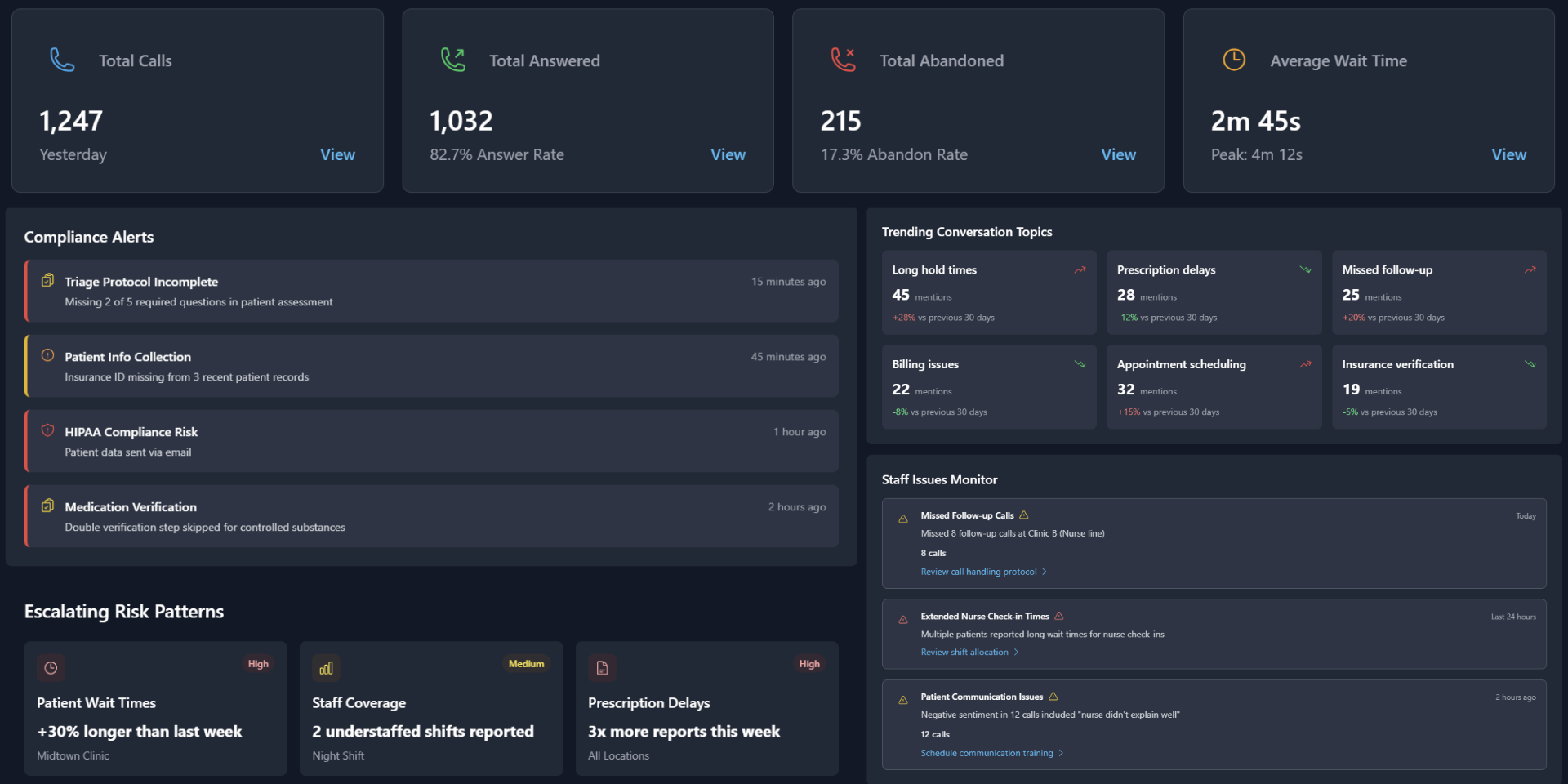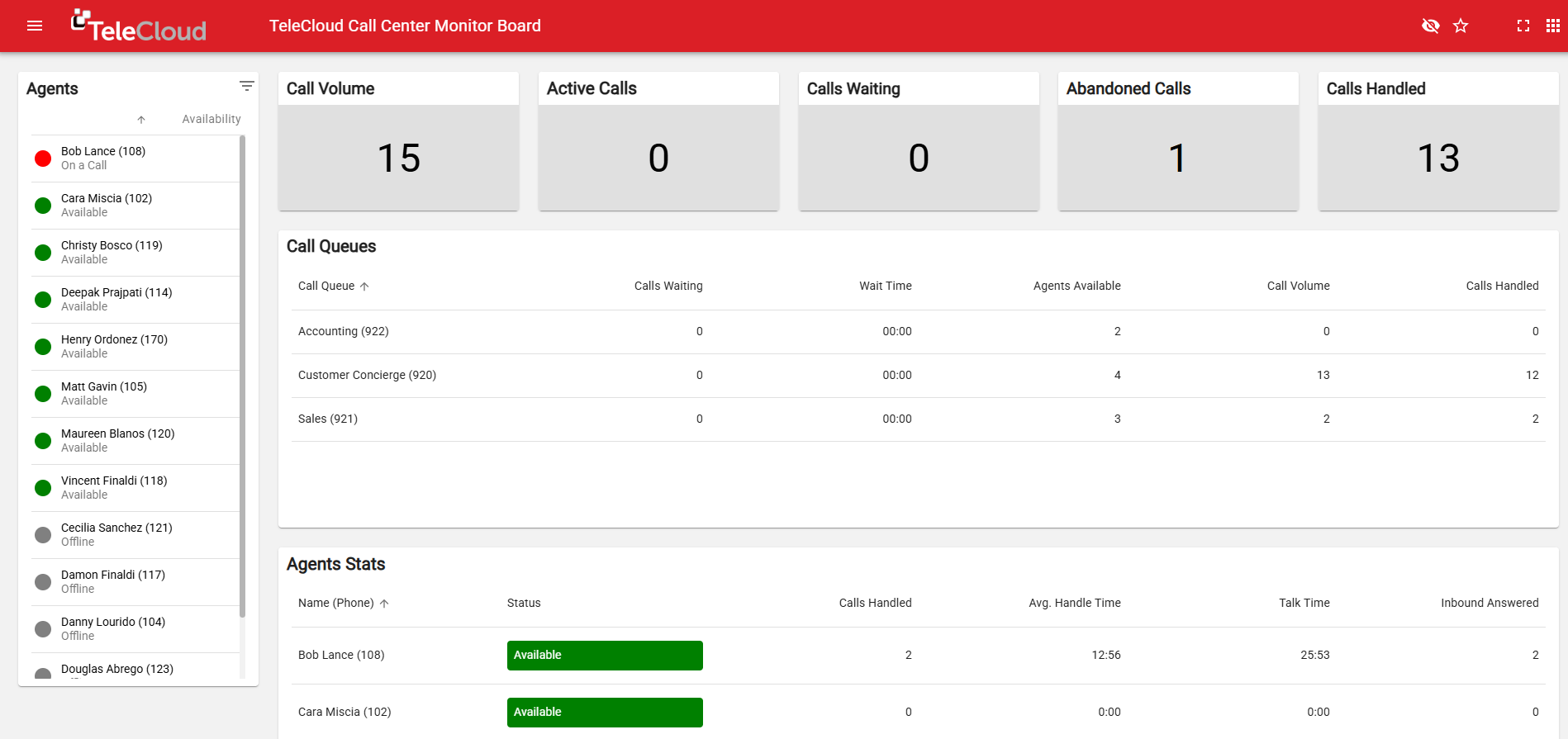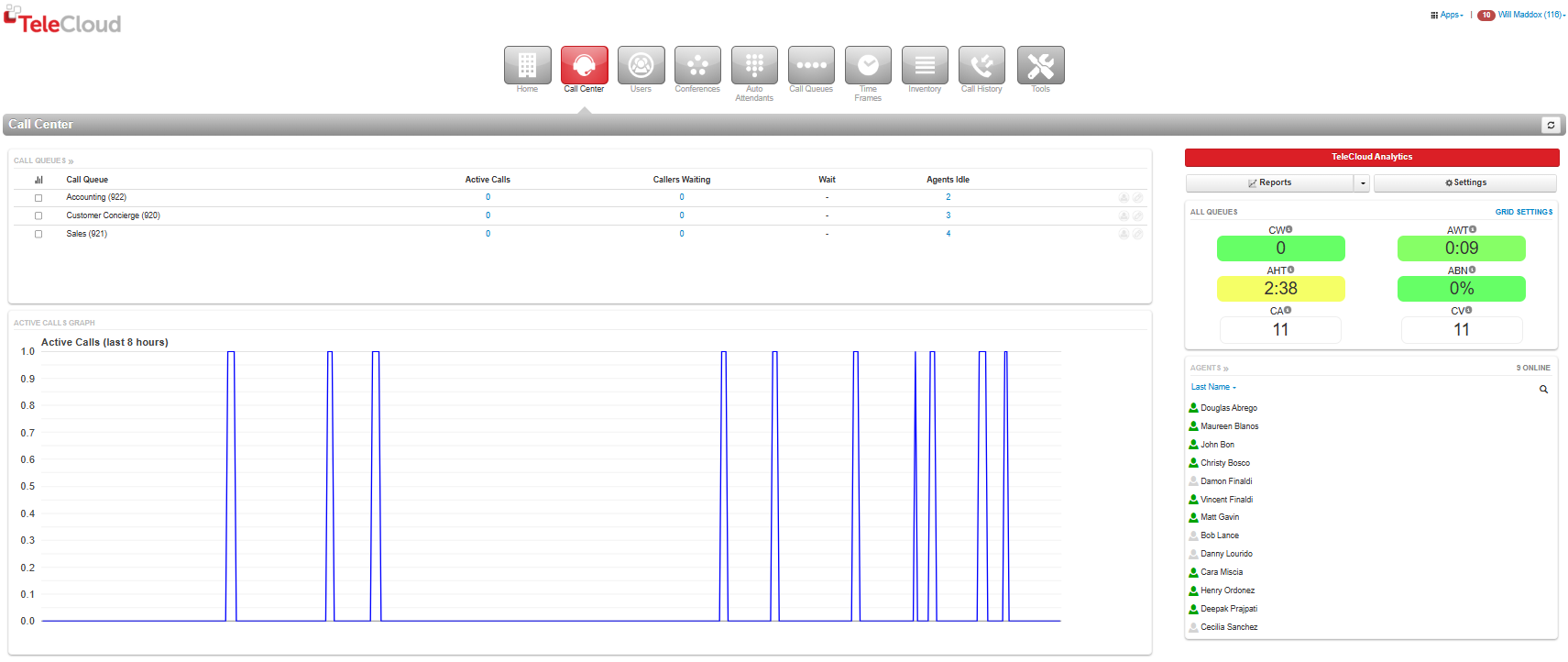Call Analytics Guide for Businesses: What It Is and Why It Matters
April 10th, 2025
4 min read
By Matt Gavin

Are calls being missed, customers getting frustrated, or team performance slipping, without you even knowing?
Most business owners don’t realize just how much valuable insight is hiding in their everyday phone calls. Call analytics isn’t just about logs and reports—it’s about finally understanding what’s really happening every time a customer reaches out. Who answered the call? How long did it ring? Did the issue get resolved, or did the caller hang up in frustration?
Whether you’re managing a busy call center or a growing customer support team, call analytics gives you visibility, accountability, and the tools to make smarter decisions. It’s the difference between reacting to problems and preventing them before they start.
At TeleCloud, we work with business leaders every day who are shocked by how much data their phone system already has—and how easy it is to put it to use. Once you see what’s possible, it’s hard to imagine running your team without it.
In this guide, we’ll break down what call analytics are, why they matter more than ever in 2025, and how you can use them to improve customer service, optimize agent performance, and elevate your entire business operation.
What Are Call Analytics?
Call analytics is the process of collecting, analyzing, and interpreting data about phone calls. This data might include basic call logs or more advanced insights such as agent performance, call queue behavior, hold times, and even customer sentiment.
But here’s the thing: not all systems deliver the same level of call analytics. The depth and quality of your analytics will depend on how your VoIP or UCaaS system is configured—and whether you’re using the right tools, like call queues, rather than basic ring groups.
Why Call Analytics Matter for Your Business
Your phone system isn’t just a tool, it’s a frontline experience for your customers and a lifeline for your operations. But without call analytics, you’re essentially running your communication strategy in the dark.
Call analytics bridges that gap by turning every call into actionable data. You can’t fix what you can’t see, and you can’t improve what you don’t measure. When used proactively, call analytics becomes one of the most powerful tools in your business for improving service, reducing costs, and driving smarter decisions. Gain the following:
Visibility Into Customer Interactions
Call analytics allows you to see what’s really happening on the front lines: who’s calling, how calls are handled, where bottlenecks occur, and what your customers are experiencing in real time. Instead of guessing, you have concrete data to evaluate service levels, response times, and communication gaps.
Smarter Staffing and Workflow Decisions
By tracking call volume trends, average handle time, and peak hours, you can adjust staffing levels and workflows to meet real demand. No more overstaffing during slow periods or under-resourcing during rushes—call analytics gives you the data to allocate resources where they’re needed most.
Real Accountability and Performance Management
With individual agent metrics, you can identify your top performers and support those who may be struggling. Metrics like call acceptance rate, talk time, hold time, and missed calls give managers a fair and consistent way to assess productivity, set expectations, and coach effectively.
Better Customer Experience
Call analytics helps reduce wait times, improve first-call resolution rates, and avoid dropped or mishandled calls. You can see when and why customers are abandoning calls, identify frustration triggers, and make improvements that lead to better outcomes and higher satisfaction.
SLA and Compliance Support
If you have service-level agreements (SLAs) with customers or internal teams, call analytics ensures you’re meeting those standards. Whether it’s response time, resolution time, or call documentation, having the data readily available helps you stay accountable and audit-ready.
Levels of Call Analytics: From Basic to AI-Powered
1. Basic Call Data (Ring Groups)
Ring groups are often used in simpler setups, where incoming calls ring multiple phones at once. The problem? They provide almost no actionable insight.
What you get:
- Time and date of call
- Caller ID and duration
- Who answered the call (if anyone)
- Basic call recordings
What’s missing:
- Which agents didn’t pick up
- Wait times
- Transfer or voicemail data
- Performance metrics
If you’re relying on ring groups, you’re flying blind. That might be fine for small teams, but not for growing businesses that rely on high call volumes.
2. Advanced Call Analytics (Call Queues)
When you move from ring groups to queues, you unlock a whole new world of data.
What you get:
- Which agents were rung and for how long
- How many calls were answered, missed, transferred, or sent to voicemail
- Agent-level metrics (average talk time, hold time, abandonment rate)
- Queue performance (call volume, wait time, overflow behavior)
- Real-time availability insights
3. Contact Center-Level Reporting (Enterprise Systems)
Contact Center systems introduce after-call work (ACW), agent notes, and call disposition tracking, which is critical for businesses with multiple queues, escalation paths, and support tiers.
This gives you:
- Post-call categorization (e.g., "resolved," "escalated," "callback required")
- Agent-written notes for context
- Workflow insights to support coaching and follow-up
- Accurate tracking for issue types and resolution rates
Combined with proper agent training and data hygiene, this level of analytics becomes invaluable for service and sales teams alike.
4. AI & Sentiment Analysis (Next-Gen Analytics)
Welcome to the new frontier: sentiment analysis and AI-powered dashboards.
Today’s AI tools can:
- Scan call transcripts for positive, neutral, or negative sentiment
- Surface high-risk or frustrated customer interactions
- Suggest real-time prompts for agents (“Here’s what to say next…”)
- Compare top and bottom-performing agents with concrete examples
Call center supervisors don’t have time to listen to every call. AI handles that for them, flagging which ones need review and even coaching agents during live conversations.
Common Mistakes When Implementing Call Analytics
Even with the right tools, businesses often make preventable errors:
- Ignoring voicemail as a fallback: Refusing to allow voicemail can lead to high abandonment rates.
- Improper ring strategies: If calls are rerouted to the back of the queue, you’re punishing patient customers.
- Untrained agents not logging in/out: If agents forget to log out, calls ring to empty desks.
- Overlooking supervisor tools: Without an active supervisor managing availability, even the best system will underperform.
Evaluating Other Providers? Ask This First.
Looking at new VoIP, call center, or contact center providers? Here’s one tip: ask to see their canned reports.
If a demo shows only 3–5 data points on call performance, that system probably won’t scale with your needs. Look for platforms that show:
- Agent-level breakdowns
- Queue analytics
- Sentiment tagging
- Call tagging and dispositions
And more importantly, look for providers who teach you how to use the data. A tool is only as good as your ability to act on what it tells you.
Why Call Analytics Aren’t Optional Anymore
In a world where customer experience can make or break your brand, you can’t afford to fly blind. Every phone call is a chance to build trust—or lose it.
Every missed call = a missed opportunity.
Every long hold = a frustrated customer.
Every unresolved issue = lost revenue.
Call analytics turns your phone system into a business intelligence tool. It doesn’t just show you what happened—it reveals why it happened, and what you can do to fix it.
At TeleCloud, we don’t believe in handing over software and hoping for the best. We partner with you to dig into the data, uncover the story behind every interaction, and make sure your system is working as hard as your team.
Wondering if your current setup is helping—or holding you back? Let’s take a look together—no pressure, just clarity.
Topics:


















